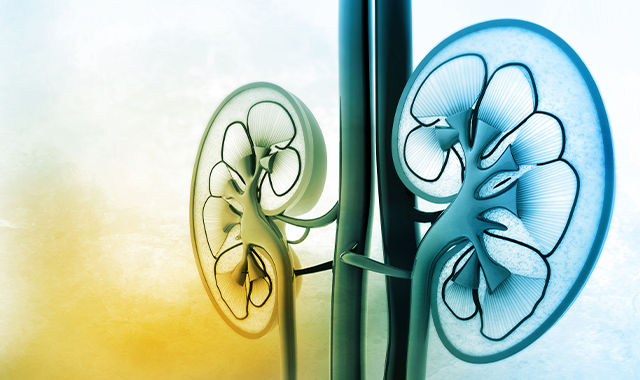Exercise Oncology May Improve HRQOL in Metastatic RCC
Patients receiving immune checkpoint inhibitors for renal cell carcinoma had improved symptom burden when enrolled in a remote exercise program.
"Our findings underscore the importance of integrating supervised remote exercise into patients’ care," according to the study authors.

Health-related quality of life (HRQOL) scores and symptom management were significantly improved when a 12-week remote exercise program was implemented for patients with metastatic renal cell carcinoma (RCC), according to data from a poster presented by the Australia and New Zealand Urogenital and Prostate Cancer Clinical Trials Group.1
At the 12-week period, the HRQOL scores were higher during the 12-week program than during the assessment period. Additionally, the impact of symptom burdens such as fatigue, anxiety, sleep quality, depression, or pain was higher in the assessment group.
“Our findings underscore the importance of integrating supervised remote exercise into patients’ care,” lead study author Paulo G. Bergerot, MD, and colleagues wrote in the poster.1 “Notable enhancements were recorded in various symptoms, indicating a comprehensive positive impact on symptom burden.”
Bergerot is a medical oncologist at Grupo Oncoclínicas in Brazil.
The study assessed those with metastatic RCC who received immune checkpoint inhibitors either alone or in combination with other agents. This population was picked because they frequently reported an impairment to their HRQOL.
Patients were assessed via WhatsApp and were given exercises on the platform Vedius. Patients were given exercise regimens of 3 to 5 hours per week for 4 to 6 days, which included both resistance and aerobic exercises.
Resistance exercises included warm-up, lower limb, upper limb, and core. Aerobic exercise included walking or running. Mobility exercises included the control of articular rotation. The investigators noted that during weeks 1 to 2, Monday, Wednesday, and Friday were reserved for mobility. Tuesday, Thursday, and Saturday were for aerobic exercises. During weeks 3 to 12, Monday, Wednesday, and Friday were for strength exercise, and Tuesday, Thursday, and Saturday were for aerobic/mobility exercise.
The outcome measures included the overall QOL and symptom management. This was assessed via the Functional Assessment of Cancer Therapy-General (FACT-G) on a scale of 0 to 108 and the Edmonton Symptom Assessment System (ESAS) on a scale of 0 to 10. Investigators assessed these outcomes at baseline and after 12 weeks.
The poster noted that descriptive statistics were computed, and linear mixed models were utilized for data analysis.
The median patient age was 67 years old, 57.9% were male, and 42.1% were female. Patients were categorized by marital status: single (26.3%), married (63.2%), or divorced (10.5%); and by education: high school diploma (42.1%), college degree (36.8%), or postgraduate studies (21.1%). Patients either had stage III (10.5%) or IV (89.5%) disease and received treatment with an ICI alone (57.9%) or with a tyrosine kinase inhibitor (42.1%).
Limitations of this study included the small sample size and the lack of a control group. Additionally, there was a short duration of follow-up.
During the 2024 American Society of Clinical Oncology (ASCO) Annual Meeting, Cristiane Decat Bergerot, PhD, BS, MS, of Oncoclínicas & Co - Medica Scientia Innovation Research (MEDSIR), presented results on the quality of life of older patients with metastatic cancer in Brazil.2 This was the first randomized control trial assessing the efficacy of a telehealth-based multimodal geriatric assessment and supportive care intervention.
Topline results found that with supportive care interventions, there were significant improvements in physical function and depressive symptoms in patient quality of life.
References
- Bergerot P, Bergerot C, da Silva JR, et al. Remote physical activity program for patients with metastatic renal cell carcinoma undergoing immunotherapy. Presented by the Australia and New Zealand Urogenital and Prostate Cancer Clinical Trials Group. July 21, 2024. https://tinyurl.com/2fdpfzzu
- Bergerot CD, Bergeot P, Razavi M, et al. Quality of life for older patients with metastatic cancer in Brazil: A telehealth-based geriatric assessment and supportive care intervention (GAIN-S). J Clin Oncol. 2024;42(suppl 16):1514. doi:10.1200/JCO.2024.42.16_suppl.1514